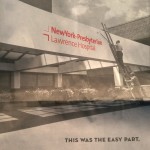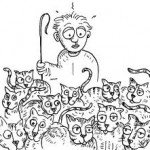Yahoo! Treading Water.
Yahoo! is sitting on a bundle of cash and according to news reports stockholders are clamoring for a payout. The cash is from holdings in Alibaba which just IPO’d. Marissa Mayer, Yahoo CEO, is being pressured to not spend money on purchases of other tech companies a la the huge Tumblr purchase — stock owners want dividend checks. Can’t really blame them.
Yahoo is a media company and a technology company. And frankly, they are not excelling at either. David Pogue is not happening. Katie Couric, not so much. The new digital food magazine is not burning down the house. And mobile first – I don’t really know what that means other than make stuff work on smaller screens and invent fun phone apps – is not delivering differentiated value at this point.
Ms. Mayer needs to tell investors “snookie, shut up and get in your bed.” She needs to put the check book away and stop looking to buy side view mirror tech companies (companies fast approaching from behind). Yahoo’s new strategy is “be part of people’s daily habits.” A nice start. But weather, food, tech news and the Middle East have been done. Yahoo needs to invent in areas that are not saturated. And big data is a good place to mine for behaviors and habits. Focus on daily habits, innovate around them and deliver under the Yahoo brand. First understand the habits, then understand the pent up demand, then turn the engineers loose. I get the feeling the engineers are defining the need, which is backwards.
Too much company time is spent reinventing not inventing. Peace.



